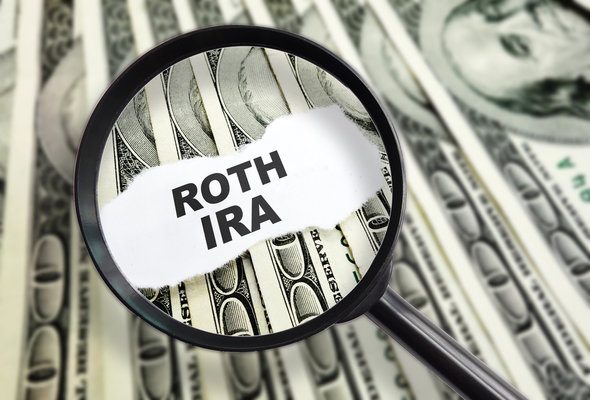If you’re working on building up a nice nest egg for yourself, it’s important to make sure that it’s going to last through retirement. One of the ways you can stretch your savings further is by structuring your retirement account withdrawals to minimize your tax burden. When you have money available from multiple sources, the order that you make your withdrawals often determines how much you’ll pay in taxes. Knowing which accounts to tap first can minimize what you’ll have to hand over to Uncle Sam. You can also speak with a financial advisor about your long-term retirement plans.
1. Start With Outside Taxable Accounts
If you’ve accumulated some sizable assets in a taxable investment account outside of your employer’s plan or another retirement account, withdrawing these funds first might be the better move for you. The reason? Distributions from an employer’s retirement plan or a tax-deferred retirement account are subject to federal income taxes. When you sell a long-term investment, the proceeds are taxed at the capital gains rate instead, which could leave you in a more favorable position.

This strategy might not always pay off. For example, it might not be right if you will have to take large Required Minimum Distributions (RMDs) down the road. Certain retirement plans, including 401(k)s, require their owners to take out a set amount of money each year beginning at age 70.5. The only time you can defer taking these distributions is if you’re still actively working.
If you put off taking any money out up to that point, it’s going to inflate your RMD amount, potentially pushing you into a higher tax bracket. In that scenario, you might want to balance out your distributions from taxable and tax-deferred accounts so you’re not taking a big tax hit once you turn 70.5.
Find out now: How much should I save for retirement?
2. Move on to Tax-Deferred Accounts
Tax-deferred retirement accounts, such as a 401(k) or traditional IRA, are funded with pre-tax dollars. This means you won’t pay any taxes on the money until you start making withdrawals. These withdrawals are then subject to regular income tax rates. If you pull any money out of one of these accounts before you reach age 59.5, you might have to pay a 10 percent early withdrawal penalty.
When you’re deciding how much money to take out of a tax-deferred account, you may want to consider how it’s going to affect your tax bracket. This is especially important if you’re on the borderline between two different brackets. If your withdrawals would push you into a higher tax range, reevaluating your deductions could help to bring it back down. For example, making charitable donations can offset a higher income, as can writing off qualifying business expenses.
3. Draw From Your Roth Accounts Last

Roth IRAs allow for tax-free distributions of earnings after age 59.5 and you can pull out your original contributions tax-free at any time as long as you’ve had your account for at least five years. Unlike traditional IRAs, you’re not required to take minimum distributions from a Roth account and you can continue making new contributions indefinitely as long as you stay within the limits and you have taxable income that doesn’t exceed the threshold. People making above certain income levels are not able to contribute to Roth accounts.
Withdrawing from a Roth won’t increase your tax bracket and you can add to your cash flow without paying taxes. Even if you never take the money out of your Roth IRA, your heirs will be able to enjoy the distributions from an inherited Roth tax-free. That’s not the case with a traditional IRA.
4. Don’t forget about Social Security or Pension Benefits
If you’re going to be receiving Social Security benefits or regular payouts from a pension, it’s important not to overlook them when planning your withdrawal strategy. Even if you’re only receiving a relatively small amount each month from either one, the extra money could make a big difference at tax time.
Bottom Line
In order to avoid taxes on your retirement plan withdrawals, you need to withdraw your cash from the right accounts in the right order. It makes a huge difference in how you’re taxed and for how much. Making sure that you leave your tax-free accounts, such as your Roth IRA, for last will help maximize the amount of cash you can take because it doesn’t increase your tax bracket at withdrawal time. Withdrawing from your taxed accounts first will trigger tax amounts at lower levels if you haven’t first pulled out that tax-free cash.
Tips for Getting Retirement Ready
- Taxes can be complicated, especially during retirement. You may want to work with a financial advisor to help you through the process of figuring out other ways to maximize the retirement cash in your pocket. Finding a qualified financial advisor doesn’t have to be hard. SmartAsset’s free tool matches you with up to three financial advisors who serve your area, and you can interview your advisor matches at no cost to decide which one is right for you. If you’re ready to find an advisor who can help you achieve your financial goals, get started now.
- Figure out how much you’ll need to save to retire comfortably. An easy way to get ahead on saving for retirement is by taking advantage of employer 401(k) matching.
Photo credit: ©iStock.com/aldomurillo, ©iStock.com/franckreporter, ©iStock.com/zimmytws
